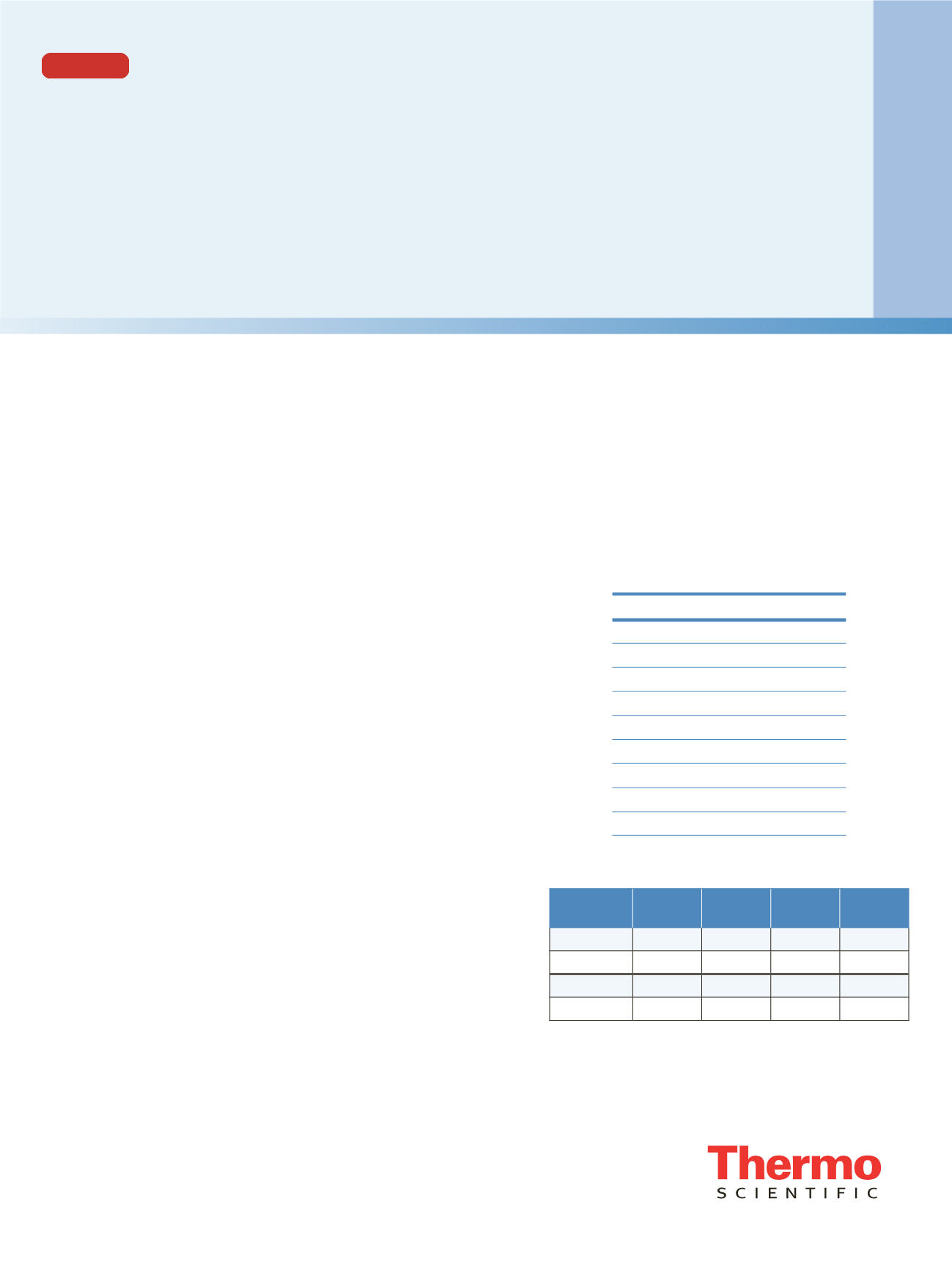

LC-MS/MS Analysis of Estradiol with
Dansyl Derivatization
Pengxiang Yang, Kristine Van Natta, Marta Kozak, Thermo Fisher Scientific, San Jose, CA
Application Note 611
Key Words
Estradiol, dansyl chloride, TSQ Quantiva, derivatization
Goal
To develop a high-performance liquid chromatography-tandem mass
spectrometry (LC-MS/MS) method for the clinical research analysis of
estradiol in human plasma with a limit of quantitation of 1 pg/mL.
Introduction
Estradiol is an endogenous steroid in the human body.
The current goal of researchers is to determine estradiol
concentrations at 1 pg/mL in plasma. Here a method for
the analysis of estradiol in human plasma was evaluated
for clinical research based on these requirements.
Experimental Methods
Sample Preparation
Samples were processed by liquid-liquid extraction (LLE)
and subsequently derivatized. Charcoal stripped serum
(CSS) was used as the matrix for the calibration curve.
The calibration curve was prepared by spiking the CSS
with known amounts of estradiol. A 500 µL aliquot of
CSS was fortified with internal standard (estradiol-
d
5
) and
extracted with 6 mL of methyl tert-butyl ether (MTBE).
The samples were vortexed, centrifuged, and frozen. The
resulting organic layer was decanted into a clean test tube
and evaporated to dryness. The residue was reconstituted
and derivatized with dansyl chloride dissolved in acetone
and carbonate buffer. An aliquot was then injected into
the HPLC-MS/MS.
Liquid Chromatography
Chromatographic separations were performed under
gradient conditions using a
Thermo Scientific ™ Dionex ™ UltiMate ™ 3000 RSLC system and UltiMate ™ 3000 RS autosampler.The analytical column was a
Thermo Scientific ™ Hypersil GOLD ™ column (50 x
2.1 mm, 1.9 μm particle size). The column was heated to
50 °C. The injection volume was 50 μL. Mobile phases
A and B consisted of 0.1% formic acid in water and
methanol, Fisher Chemical
™
Optima
™
grade solvents,
respectively. The total run time was 9 minutes.
Mass Spectrometry
MS analysis was carried out on a
Thermo Scientific ™ TSQ Quantiva ™ triple quadrupole mass spectrometerequipped with a Thermo Scientific
™
Ion Max NG source
and heated electrospray ionization (HESI-III) probe. Two
selected-reaction monitoring (SRM) transitions were
monitored for estradiol and its deuterated internal
standard to provide ion ratio confirmations (IRC).
Mass spectrometer and SRM parameters are shown in
Tables 1 and 2, respectively.
Table 1. Mass spectrometer parameters for estradiol
Table 2. SRM parameters
Data was acquired and processed with Thermo Scientific ™ TraceFinder ™ software.Parameter
Value
Spray Voltage
4500 V
Sheath Gas
30 Arb
Aux Gas
10 Arb
Sweep Gas
1 Arb
Ion Transfer Tube
380 ˚C
Vaporizer
400 ˚C
CID Gas
2.5 mTorr
Cycle Time
0.3 s
Divert Valve
5.0–7.5 min
Compound Precursor
Ion (
m/z
)
Product
Ion (
m/z
)
CE
Lens
Estradiol
506.2
156.2
35
120
171.2
35
120
Estradiol-
d
5
511.2
170.2
35
120
171.2
35
120



















